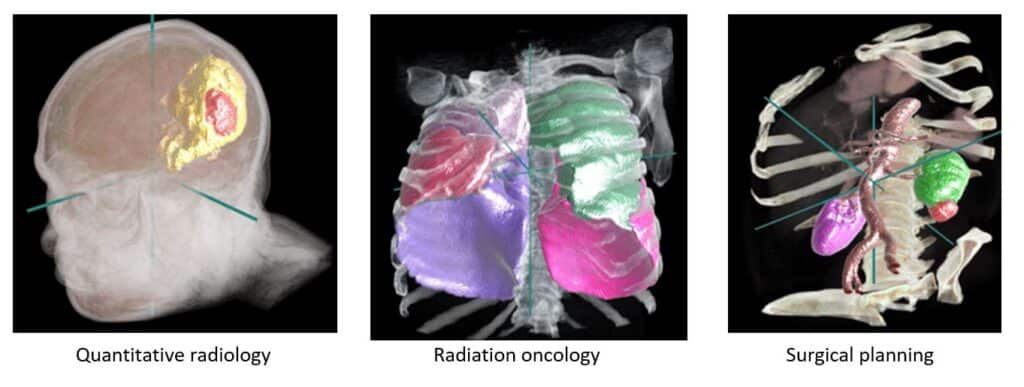A hospital in Britain is the first to use groundbreaking artificial intelligence (AI) technology to rapidly detect cancerous tumors and save lives. The AI, called Inner Eye and developed by Microsoft, automatically highlights tumors and healthy organs from patient scans, reducing the time it takes clinicians to prepare radiotherapy treatment by up to 90%.
Addenbrooke’s Hospital in Cambridge is the first in the world to incorporate the pioneering Inner Eye technology into its cancer program. The technology is open sourced so it can be used by any clinicians at any hospital in the world. By doing this, the global company has created a huge data sharing project that will contribute to vital cancer research. Using the hospital’s own data, the model automatically highlights tumors and healthy organs on patient scans, up to 13 times faster than if done manually. The results are then checked and confirmed by a clinical oncologist before the patient receives treatment.
Up to half of the people in the UK will be diagnosed with cancer at some point in their lives, according to Cancer Research UK. Of these, half will be treated with radiotherapy, which involves focusing high-intensity radiation beams to damage the DNA of hard, cancerous tumors while avoiding surrounding healthy organs. A 2020 study published in the journal Molecular Oncology states that “50% of all European cancer patients have an indication for radiotherapy at least once in the course of their disease, more than one out of four cancer patients in Europe do not receive the radiotherapy they need.” Many cancers can grow rapidly if left untreated, so reducing the lengthy treatment planning stage will help save lives.

InnerEye is the result of an eight-year-long project with Microsoft researchers and NHS Addenbrooke’s hospital, and it is being rolled out across other hospitals in the UK, with the aim of rolling it out across the world. When the AI tool is in place, the hospital will be able to use its own data to improve accuracy. It is believed to be the first time an NHS trust has introduced a deep-learning solution trained on their own data.
Dr. Raj Jena, an oncologist at Addenbrooke’s, said:
“The results from InnerEye are a game-changer. To be diagnosed with a tumor of any kind is an incredibly traumatic experience for patients. So as clinicians we want to start radiotherapy promptly to improve survival rates and reduce anxiety. Using machine learning tools can save time for busy clinicians and help get our patients into treatment as quickly as possible.”
To determine the best course of treatment and where and when radiotherapy will be most beneficial, a series of 3D scans must be taken of the patient. These CT images come in the form of stacks of 2D images, dozens of images deep, each of which must be examined and marked up by a radiation oncologist, clinical oncologist or specialist technician. This process is called contouring. In each image, an expert must manually draw a contour line around the tumors and key healthy organs in the target area using dedicated computer software. For complex cases, this can take several hours in the planning of a single patient’s treatment, but InnerEye can do this task 13 times faster.










